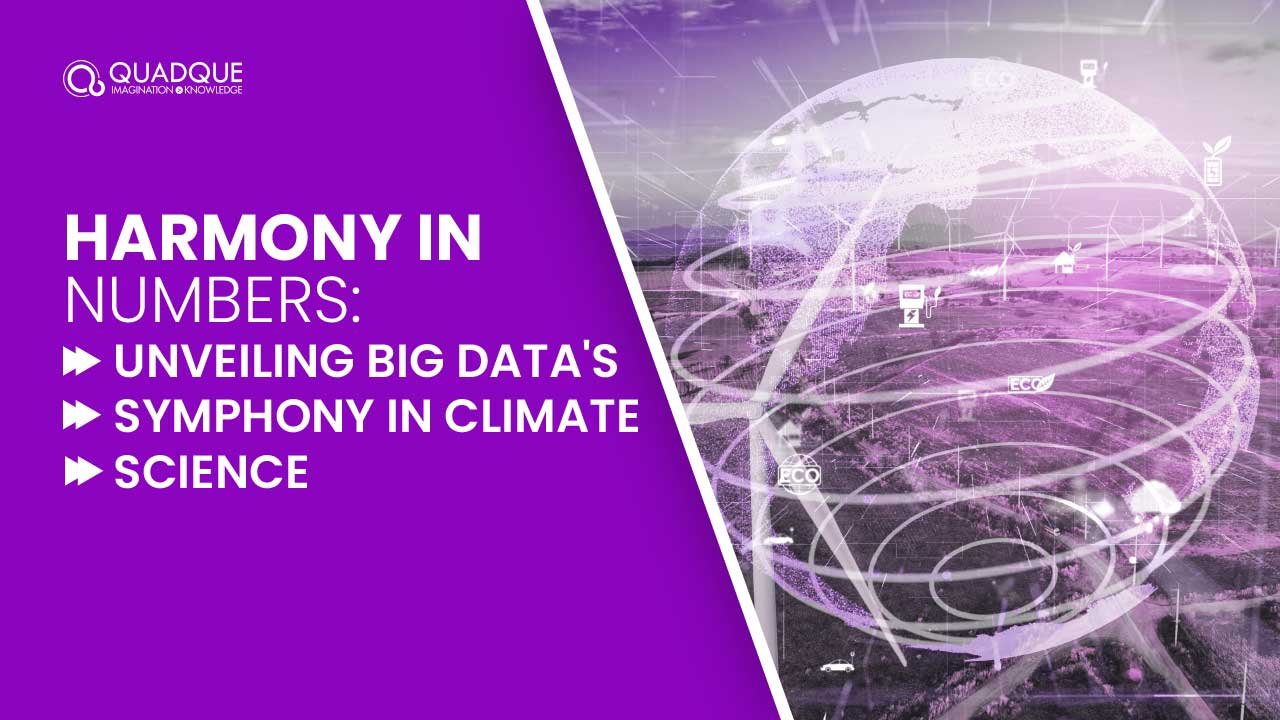
Climate Science in the Digital Age
Overview:
In the ever-evolving realm of climate science, the digital age has ushered in a symphony of data-driven solutions. This comprehensive guide, “Harmony in Numbers: Unveiling Big Data’s Symphony in Climate Science,” takes you on a journey through the intricate world of environmental data analysis, climate modeling, and the application of Big Data to tackle climate challenges. From Earth observation technologies to sustainable data practices, each note in this symphony contributes to understanding and preserving our planet.
I. Prelude: Environmental Data Analysis – Decoding Nature’s Language (300 words)
The symphony begins with the prelude of environmental data analysis, akin to deciphering nature’s intricate language. In this section, we explore the methods and tools used to collect, process, and interpret environmental data. Like skilled musicians reading musical notes, environmental scientists decode patterns, trends, and anomalies in the vast dataset provided by our planet.
II. Movement I: Climate Modeling – Orchestrating the Future of Our Atmosphere (300 words)
The first movement unfolds with climate modeling, where scientists become orchestrators of the future atmosphere. Similar to composers crafting musical scores, climate modelers create simulations and scenarios to predict and understand the dynamics of our changing climate. This section dives into the methodologies and technologies employed in climate modeling, showcasing how data shapes our projections of Earth’s climate.
III. Movement II: Data-Driven Climate Solutions – Composing Change with Precision (300 words)
The second movement introduces data-driven climate solutions, akin to composing change with precision. Much like musicians fine-tuning their instruments, scientists harness the power of data to develop strategies and interventions for mitigating climate impact. This section explores real-life examples of data-driven solutions making a tangible difference in addressing environmental challenges.
IV. Interlude: Earth Observation Technologies – A Symphony from Above (300 words)
The interlude features Earth observation technologies, creating a symphony from above, capturing the melody of our planet. Similar to conductors overseeing an orchestra, scientists utilize satellite data, remote sensing, and geoinformatics to monitor environmental changes. This section delves into the technologies and applications that provide a comprehensive view of Earth’s ecosystems.
V. Movement III: Climate Science Analytics – Harmonizing Patterns in Complexity (300 words)
The third movement harmonizes with climate science analytics, navigating patterns in the complexity of climate data. Like skilled musicians interpreting a musical score, scientists use analytics to derive insights, correlations, and trends from vast datasets. This section explores the methodologies and tools employed in climate science analytics, emphasizing their role in understanding climate patterns.
VI. Movement IV: Climate Data Interpretation – Translating Nature’s Melody (300 words)
The fourth movement involves climate data interpretation, akin to translating nature’s intricate melody. Much like interpreters translating a language, scientists interpret climate data to understand the impacts of human activities and natural processes. This section explores the significance of accurate data interpretation in shaping climate policies and conservation efforts.
VII. Movement V: Environmental Monitoring Systems – Synchronizing Nature’s Rhythm (300 words)
The fifth movement synchronizes with environmental monitoring systems, orchestrating nature’s rhythm. Similar to a conductor coordinating musicians, scientists implement monitoring systems to track environmental changes in real time. This section explores how these systems contribute to the ongoing efforts of environmental conservation and preservation.
VIII. Cadenza: Sustainable Data Practices – Ensuring the Symphony’s Continuity (300 words)
The cadenza focuses on sustainable data practices, ensuring the continuity of the symphony. Like musicians preserving instruments for future performances, scientists advocate for ethical and sustainable data collection, storage, and sharing. This section emphasizes the importance of responsible data practices in maintaining the integrity and impact of climate science.
IX. Finale: Big Data Applications in Climate Studies – Culmination of a Digital Overture (300 words)
The grand finale culminates with big data applications in climate studies, the digital overture that concludes our symphony. Similar to a climactic moment in a musical composition, Big Data applications play a pivotal role in advancing climate research. This section explores the cutting-edge applications, innovations, and breakthroughs driven by Big Data, shaping the future of climate science.
Conclusion:
In the culmination of our exploration into the intricate world of climate science in the digital age, we find ourselves immersed in the harmonious interplay of data, technology, and environmental stewardship. From the gentle prelude of environmental data analysis to the grand finale of Big Data applications, our journey has been a symphony of understanding, innovation, and dedication to the planet.
In the grand finale, Big Data applications stand as the digital overture, marking a climactic moment in advancing climate research. The innovative applications and breakthroughs fueled by Big Data propel climate science into new frontiers, promising a future where technology, data, and environmental consciousness converge.As we conclude this symphony of climate science, each note resonates with a commitment to understanding, preserving, and harmonizing with the delicate balance of our planet.
This journey invites us to appreciate the interconnectedness of data-driven knowledge and sustainable practices, inspiring ongoing efforts to save our planet and ensure a future that echoes the harmony of responsible environmental stewardship. May the resonance of this symphony reverberate in the collective consciousness, driving us towards a sustainable and harmonious coexistence with the Earth.
Recent Posts
- Sustainable Graphic Design for 2024 and Beyond
- Profit Power: Maximizing Revenue Growth with CRM Software
- Medical and Elderly Care in the UK: Strategies for Sustainable Growth
- Securing Educational Excellence: IT Support for the Digital Era
- Tech Transformation: The Untold Story of Bangladesh’s Innovation Hub
Recent Comments
Latest Post
Categories
- AI
- Biometric
- Blockchain
- Cloud Computing
- CRM
- custom software
- Cybersecurity
- Data Analysis
- Datacenter Management
- Designer
- Digital Marketing
- Education
- health care
- Informative
- ISP Management
- IT Procurement
- IT Recruitment
- IT Support
- Mobile App
- Network Management
- Robotics Landscape
- SAP ERP
- SEO
- Structured Cabling
- Tech Australia
- Tech bangladesh
- Technology
- tourism
- Uncategorized
- Web Development


